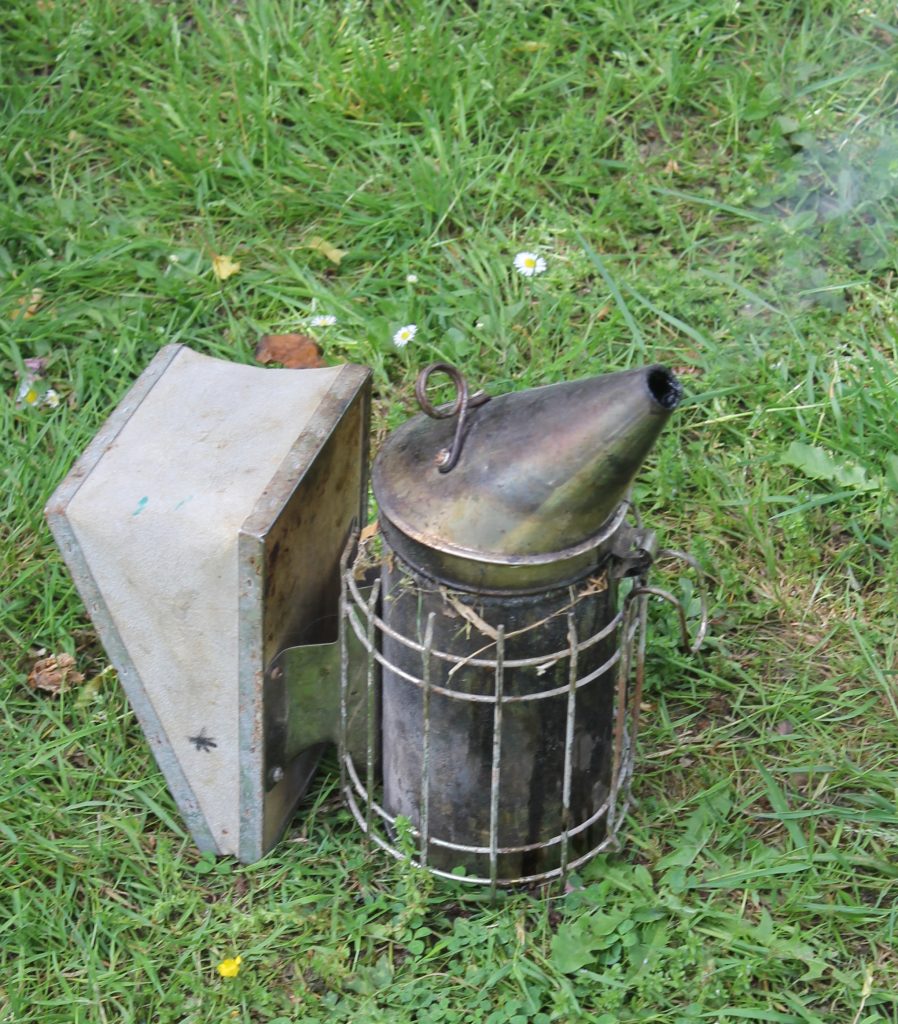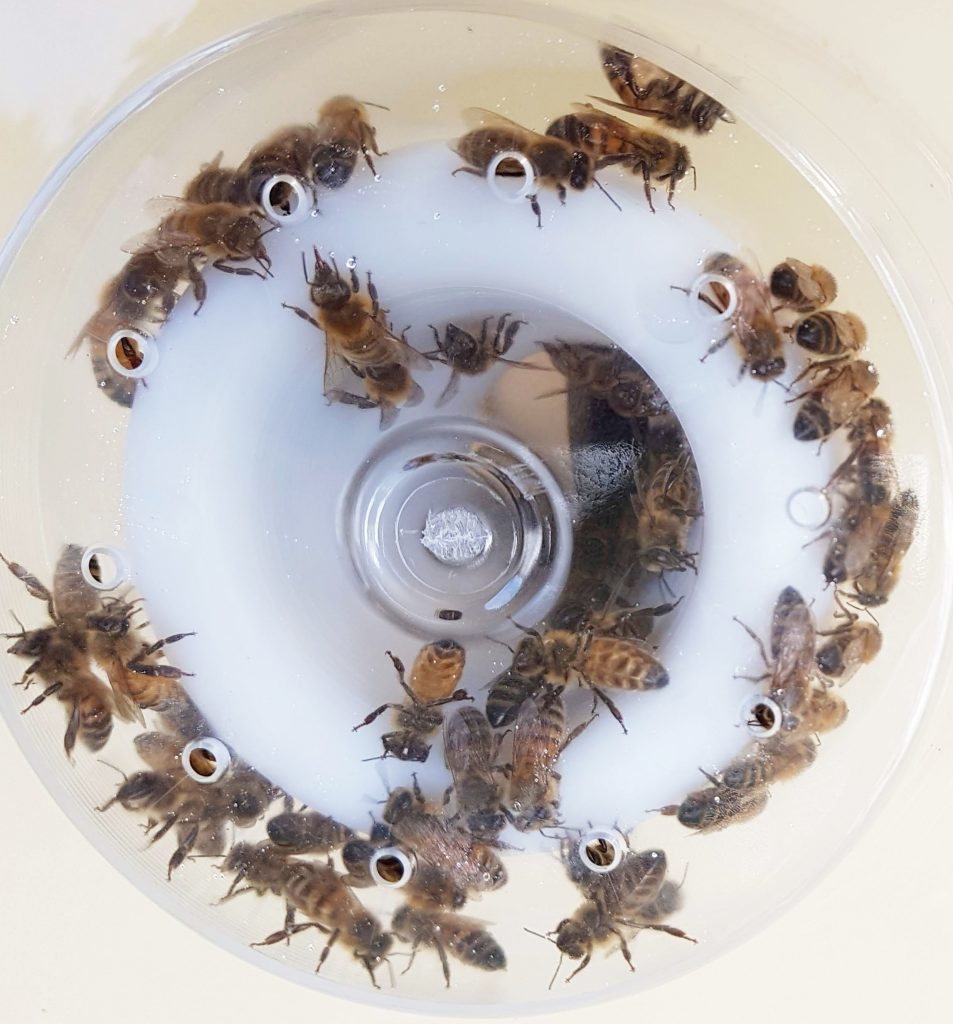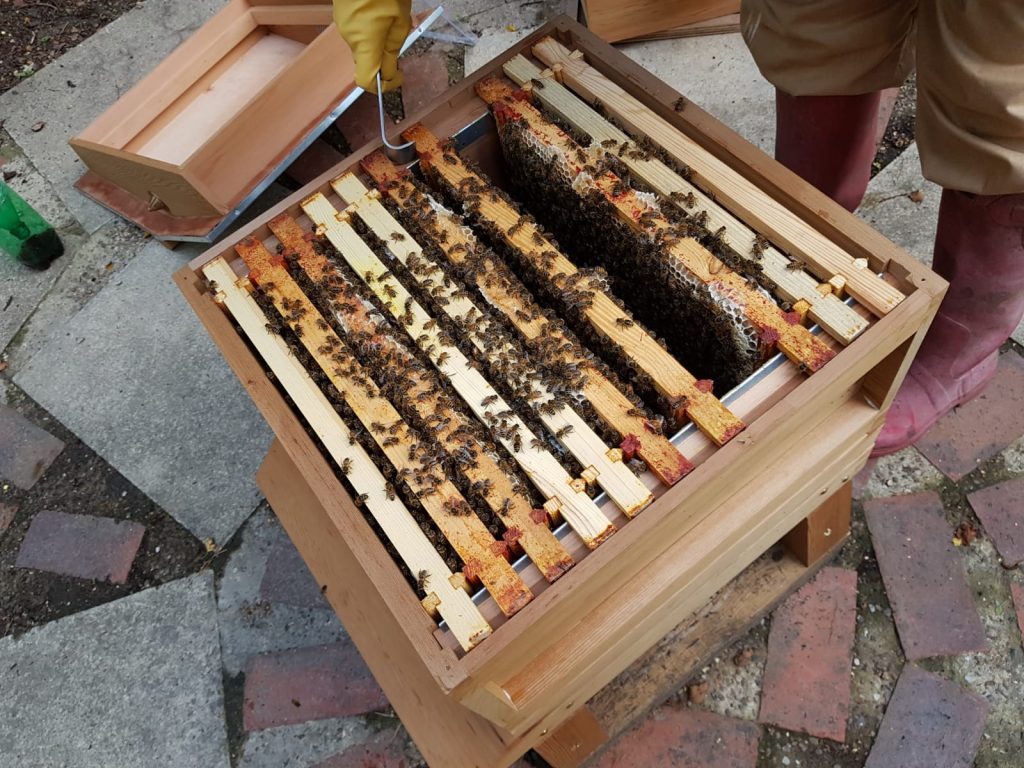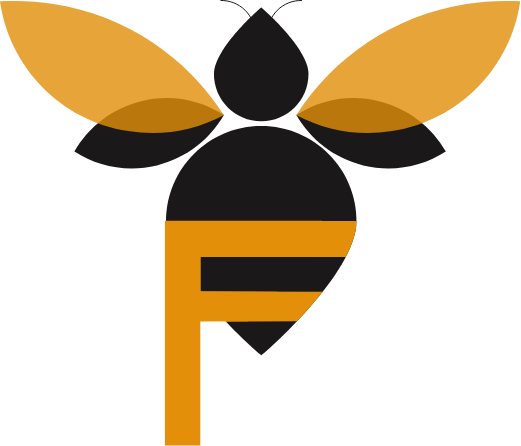Suggested Essential Equipment for a New Beekeeper
1. Protective Clothing
a. Suit or veil
Veil is the minimum requirement but a full suit with veil attached is preferable. Make sure it is large enough to hang loosely (you will be bending and stretching) and that the veil will detach for careful washing.
b. Gloves
Washing-up gloves with sufficient cuff to cover the wrist of suit.
Disposable gloves – can be bought by the hundred from many places with cotton household gloves (eg from Boots) underneath. These save the hands sweating and are far more flexible, but might be too small for large hands.
Leather gauntlets are good against stings but make it very difficult to handle the bees sensitively (so you can end up with more stings!) and are unhygenic as they’re difficult to wash so there is a risk of spreading disease. Disposable gloves over the top avoid that but then they’re even more clumsy to use!
c. Footwear
Usually Wellington boots, although some find shoes with sock long enough to well cover trouser bottoms are sufficient. Beware bees like to crawl up!
2. SMOKER
With fuel and matches or lighter

3. Hive tool
Various types are available.
4. HIVE
For one colony you will need two hives. Bees are bound to swarm sooner than you think.

The first consisting of :-
- Stand (or bricks)
- screen floor
- 1 or 2 brood boxes, preferably 2 (fitted with Hoffman frames and foundation)
- 3 or 4 supers (fitted with Hoffman frames and foundation)
- framed queen excluder
- crown board
- spare super (or small “eke”)
- a waterproof roof
- tacks for frames
The second hive will be essential when the colony decides to swarm and needs to consist of :-
- stand
- floor
- brood box (with frames and foundation)
- super (with frames and foundation)
- crown board
- roof
5. feeder
Contact feeder is essential, others useful at times.

THE ABOVE ARE THE VERY BASIC ESSENTIALS
6. Household box (or similar)
To carry odd bits of equipment such as coloured drawing pins, marker pen, spare smoker fuel, matches, match box, queen cage etc.
7. Miscellaneous
- Bee escapes
- Mouse guards
- Entrance blocks
8. Books on beekeeping
There are many available; for starting out we like The BBKA Guide to Beekeeping (2/e) and The Haynes Bee Manual.
Ted Hooper’s Guide to Bees and Honey or Clive de Bruyn’s Practical Beekeeping are both good reference books and there are many many more!
9. Honey Extractor
Members can hire extractors from FBKA.
10. Bees
Nuclei from swarms can be supplied to members, but ongoing temper and health can never be certain. Professional suppliers can provide nuclei of assured good temper but at substantially greater cost.

11. Jars and containers
For the Honey crop. Food safe plastic buckets and glass jars can be bought from many suppliers.
12. Cover Cloths
These are not used as common practice these days but a number of our beekeepers still rely on them. Ideally they are about 2” larger than the size of a super, and weighted at two sides. The material should be easily washable and weights easily removed (sealed in a packet with a safety pin!)
And finally don’t forget a packet of household washing soda crystal for cleaning tools and other equipment.
